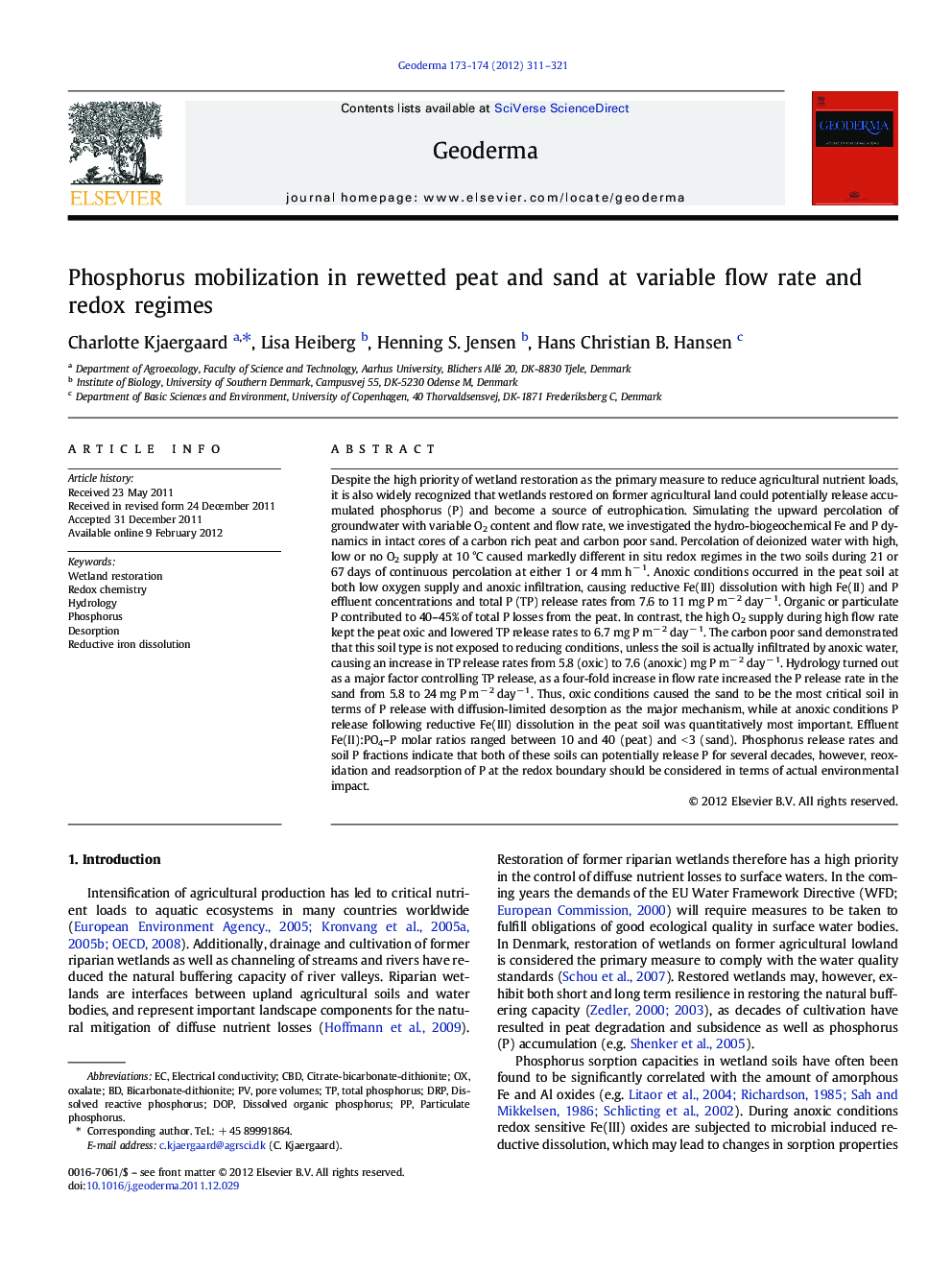| کد مقاله | کد نشریه | سال انتشار | مقاله انگلیسی | نسخه تمام متن |
|---|---|---|---|---|
| 4573962 | 1629501 | 2012 | 11 صفحه PDF | دانلود رایگان |

Despite the high priority of wetland restoration as the primary measure to reduce agricultural nutrient loads, it is also widely recognized that wetlands restored on former agricultural land could potentially release accumulated phosphorus (P) and become a source of eutrophication. Simulating the upward percolation of groundwater with variable O2 content and flow rate, we investigated the hydro-biogeochemical Fe and P dynamics in intact cores of a carbon rich peat and carbon poor sand. Percolation of deionized water with high, low or no O2 supply at 10 °C caused markedly different in situ redox regimes in the two soils during 21 or 67 days of continuous percolation at either 1 or 4 mm h− 1. Anoxic conditions occurred in the peat soil at both low oxygen supply and anoxic infiltration, causing reductive Fe(III) dissolution with high Fe(II) and P effluent concentrations and total P (TP) release rates from 7.6 to 11 mg P m− 2 day− 1. Organic or particulate P contributed to 40–45% of total P losses from the peat. In contrast, the high O2 supply during high flow rate kept the peat oxic and lowered TP release rates to 6.7 mg P m− 2 day− 1. The carbon poor sand demonstrated that this soil type is not exposed to reducing conditions, unless the soil is actually infiltrated by anoxic water, causing an increase in TP release rates from 5.8 (oxic) to 7.6 (anoxic) mg P m− 2 day− 1. Hydrology turned out as a major factor controlling TP release, as a four-fold increase in flow rate increased the P release rate in the sand from 5.8 to 24 mg P m− 2 day− 1. Thus, oxic conditions caused the sand to be the most critical soil in terms of P release with diffusion-limited desorption as the major mechanism, while at anoxic conditions P release following reductive Fe(III) dissolution in the peat soil was quantitatively most important. Effluent Fe(II):PO4–P molar ratios ranged between 10 and 40 (peat) and < 3 (sand). Phosphorus release rates and soil P fractions indicate that both of these soils can potentially release P for several decades, however, reoxidation and readsorption of P at the redox boundary should be considered in terms of actual environmental impact.
► Redox regime and flow rate controls Fe and P dynamics in peat and carbon poor sand.
► Diffusion-limited desorption is the major mechanism of P release in sand soils.
► Reductive Fe dissolution significantly increases P release rates in peat soils.
► Flow rate significantly determines total P release.
► Restored wetlands can potentially release P at high rates for several decades.
Journal: Geoderma - Volumes 173–174, March 2012, Pages 311–321